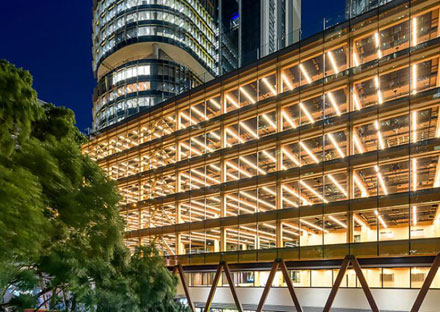
It may come as no surprise that research funded by a timber lobby group has found wood finishes in offices make employees happier and more productive. Source: Australian Financial Review
The Forest & Wood Products Australia-funded survey of 1000 indoor workers found those exposed to wooden surfaces said they were happier, but there was logic to it, said University of Canberra associate professor Jacki Schirmer.
The survey results – adjusted to account for factors such as age, income, gender and workplace culture – found 82% of workers exposed to eight or more wooden surfaces in their workplace reported being ‘satisfied or very satisfied’ with work, compared with 69% of respondents who were exposed to five to seven wooden surfaces and just 53% with no wooden surfaces.
“There is a surprising amount of evidence there,” Professor Schirmer said. “I’ve gone from being pretty sceptical to being a solid supporter of the idea of using wood together with other biophilic elements.”
The findings offer a way for landlords and tenants wanting to retrofit their workspaces without going to the costlier and more extreme lengths of demolishing existing buildings or knocking holes inside office towers to create an environment that exposes workers to so-called biophilic elements – elements of nature or references to the natural world.
A separate 2015 study at Melbourne University showed green roofs improved concentration.
Respondents to the Canberra University study, over two-thirds of whom were indoor workers in an office, and the rest of whom were in shops and factories or warehouses, said they were happier in an environment with timber surfaces, but the presence of wood had to be balanced by other elements, such as light and plants.
While wood could be used in furniture and furnishings ranging from desks, tables and cupboards to floorboards and ceiling beams, the most noticeable benefit came when it was used on between 10% and 40% of surfaces, said Professor Schirmer, a health researcher.
“[If it went] over about 40% of wood surfaces, the effect levelled off,” she said.
And while respondents said they felt more productive if happier at work, the research didn’t explicitly prove that link.
“The conversation around productivity is a very complex one,” said Robyn Lindsey, a partner at design firm Geyer. “Many things influence productivity, such as the leadership and culture in place at the same.”
Timber, along with other elements such as light, vistas and a sense of where the sun would naturally be, were all important, she said.
“It needs to be in balance,” Ms Lindsey said. “If you have an office completely full of timber, it could be quite overwhelming. You might feel lost in a deep forest. You still need to be able to see the light at the end of the woods.”





